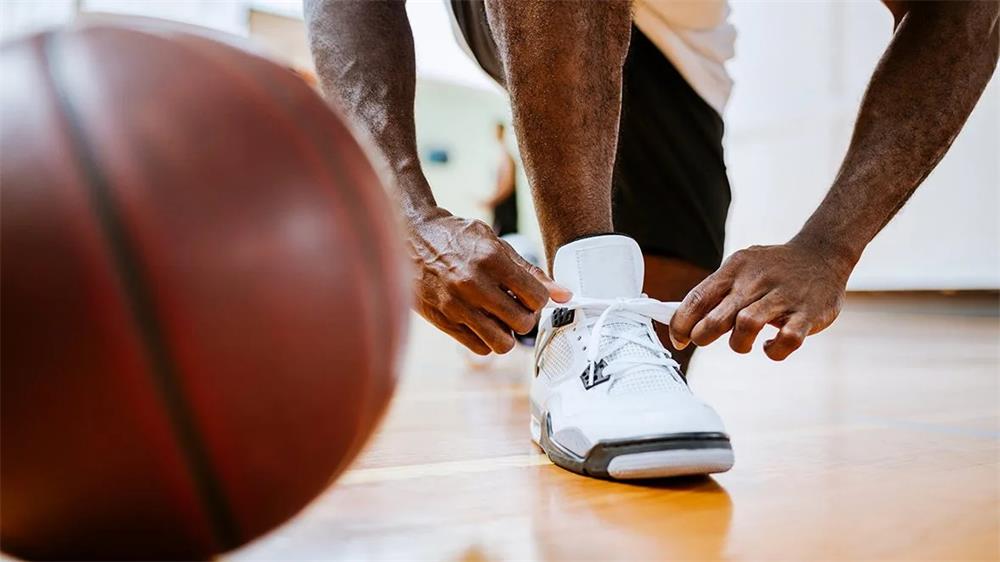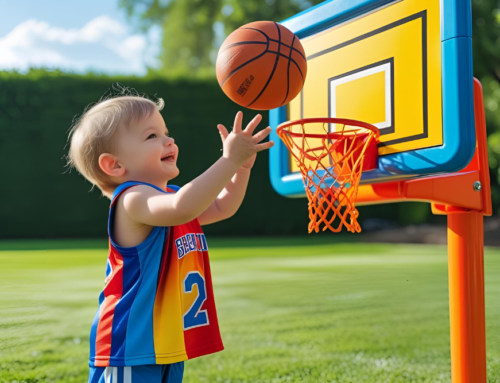
As basketball is an intense sport, basketball shoes must be durable, comfortable, supportive, stability, and provide good shock absorption.
How can we tell if basketball shoes are good or bad?
In order to understand basketball shoes, you should know how they are constructed. A basketball shoe is composed of uppers, insoles, shoelaces, shock-absorbing materials, outsoles, and other parts. Good basketball shoes should fit snugly between the parts, be well-made, and be comfortable to wear, providing good shock absorption and foot protection.
How do I judge a good basketball quality?
When it comes to determining the quality of shoes, it is important to consider both appearance and internal indicators. Because internal indicators often require testing instruments, it is more practical for you to identify shoes’ quality based on their appearance.
Quality is mostly determined by the materials (including the upper, the sole, and the lining) and workmanship of the shoes. The size can be measured, and the craftsmanship is primarily determined by visual inspection, hand touch, pinching, and pushing.
1. Upper
As one of the main components of the shoe, the upper is one of the most important aspects, which depends on how soft and plump it is, as well as whether there is a loose surface when pressed by hand.
A good upper should be plump, soft, and comfortable to the touch. It should also have a uniform luster and be free of loose threads. The fluff on suede shoes should be short and uniform, and the color tone should be consistent. The inside of the shoe is also part of the upper, which reinforces the upper, prevents it from stretching, and improves the feel of the shoe.
It is therefore important to choose shoe lining materials that have good touch, breathability, moisture removal, and are not easy to discolor, and are not wrinkled.
2. The Sockliner
Usually, men’s shoes use the insole with the back half pad or heel pad. Women’s shoes have full padding covering the insole. Insoles play an important role in keeping the insole clean and removing moisture from the foot. Therefore, the insole should be flatly adhered to the inner sole and have no hanging folds.
3. Outsole
According to appearance, the periphery of the outsole should be tightly bonded without gaps, and the bottom surface should be flat.
4. The Heel
It is important to check whether a heel fits naturally with the shoe whether it has a low heel or a high heel.
Two points are more important when it comes to women’s shoes with a half-heel or higher;
First, the heel should be firmly attached to the inner sole, and it should not shake when it swings back and forth;
Second, the palm surface should not be smaller than the bottom surface of the heel.
5. Insole
A genuine leather insole is best, but you should also press the waist with your hand, which is equivalent to the part of the instep when wearing shoes.
When the bezel of the shoe is deformed under the action of this force, it indicates a problem with the shoe’s quality.
6. Instability
If the shoes are put on a flat surface, they should stand still immediately. Good stability is another essential quality of high-quality shoes.
Anatomy of basketball Shoes

1. The upper
This is the soft part of the shoe that makes your feet feel comfortable and safe while playing, and also has good support for your feet during long-term exercise, so that your feet don’t slide easily and cause injuries.
2. Cuts
Choosing a pair of basketball shoes begins with determining which type of upper sneaker is most comfortable for you. Do you prefer high-top, mid-top, or low-top cuts?
High Tops
There are about 70% of athletes who choose these high-top sneakers because they provide the best ankle support. Long-range and power-aggressive athletes also require more stability from these types of shoes.
Mid Tops
Mid-top shoes are the best choice for athletes who are good at speed and feel that high-top shoes have a lot of restraint.
Low Tops
About 10% of athletes wear low-top shoes during regular competition. Although these shoes are lighter, they do not provide as much ankle support as high-top shoes.
3. The Material
All leather uppers are gone, replaced by lightweight hybrid uppers. Typically, this upper is made from a combination of strong, durable leather and a breathable, flexible synthetic mesh. High-tech synthetic mesh uppers are more durable than leather, and are popular for their ultralight properties.
4. Foot-holding Structure
A good foot-holding structure will prevent your sneakers from coming off or stopping suddenly during exercise, and will hold your feet more when running frequently and turning around quickly.
5. Shoelaces
It is also important to consider laces when it comes to enhancing the stability of the shoe. The lacing structures will also be designed and introduced by many manufacturers to increase stability. Good lacing structures can find a comfortable level, not too loose or too tight, and can be more stable and tucked during movement.
6. Secure with Straps
To prevent sprained ankles, some shoes have a strap wrapped around the upper portion of the arch of the foot.
7. Zipper
Using zippers to protect the foot in basketball sneakers is a relatively new option, and they are often covered with some kind of protective material. The zipper isn’t too tiring, but it doesn’t provide good support either, so this is a great option for kids who can’t tie their shoelaces yet.
8. The Midsole
A midsole is the softer layer of material between the upper and the outsole that absorbs shock. Materials and structures used in basketball shoes affect different levels of cushioning and shock absorption, which in turn affects how well athletes bounce.
9. The Damping & Cushioning Material
Generally, the midsole is made of EVA, compressed EVA, PU, or a combination of these materials.
EVA or compressed EVA is lighter, but not very stable and durable. Compressed EVA may be more durable, as well. Different brands of basketball sneakers have their own proprietary shock-absorbing technology.
10. PU
In addition to being more compact and durable, it can increase the stability of the shoe, but at the same time it is heavier.
11. Shock-Absorbing Technology
Basketball shoes are made lighter by adding shock-absorbing material to their heels and forefoot.
12. Stabilization and Braking
Some basketball shoes use hard, non-moving material in the center or inside of the shoe to reduce foot rotation.
Shock-absorbing materials are also gradually being used on the inner portion of the shoe to increase stability, but if the midsole is too thick, it tends to have a negative effect, so make sure you choose basketball shoes with the right midsole thickness for shock absorption and stability.
13. The Outsole
The sole is made of rubber. A good pair of basketball shoes must have a flat and wide outsole to prevent ankle sprains. An outsole with a herringbone pattern is the most common, as this outsole can be more stable during rapid starts and stops. Generally, basketball shoes are designed for indoor use, and if you spend lots of time outside, you should look for a more durable sole. A heavier outsole is designed specifically for people who play basketball outside.
14. Size
Comfort is determined by shoe size. Foot size can change over time, so do not guess your current size based on your previous shoes. Make sure to measure your feet before buying a pair of shoes that fits perfectly.






Leave A Comment